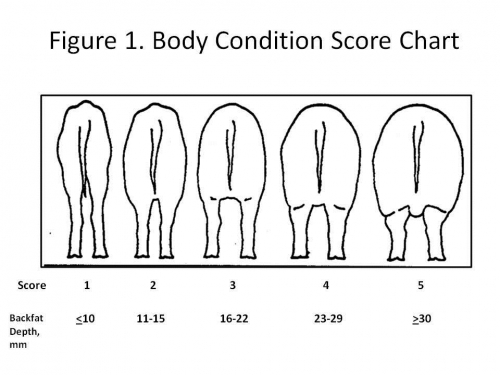Sow body condition influences productivity and profitability
Sow Body Condition can be used as a management tool to optimize breeding herd feed resources and ultimately improve productivity and profitability.
The pork industry is faced with high input costs that are squeezing profitability margins. Correctly managing feed resources will optimize pig and sow performance and maintain favorable feed costs per cwt of pork sold. Underfeeding or overfeeding sows can unfavorably impact sow productivity and therefore adversely affect cost of production. Sows that are underfed, though reducing feed allocated per sow, can cause sows to be too thin, impair their ability to return to estrus after weaning and increase their risk of being culled. High culling rates increase the proportion of gilts in the herd, reduce overall sow productivity and increase genetic costs per pig. Overfeeding sows can cause sows to be too fat. Fat sows tend to have poorer lactation performance and also have an increased risk of not returning to estrus which will also lead to higher than necessary culling rates.
Sows are often visually evaluated for sow body condition, typically at weaning and during gestation. The scoring system assigns a numerical score of 1-5. Sows that are extremely thin are given a score of 1. Sows that are extremely fat are given a score of 5. Sows that are intermediate in condition are given a score of 2, 3 or 4 depending on their degree of fatness. A schematic is provided below in Figure 1.

Adapted from the Tri-State Swine Nutrition Guide, 1998.
Producers can use this visual scoring system to determine if sows should be fed more or less feed, therefore, optimizing feed resources to maintain sow productivity. If done correctly scoring body condition on sows should allow producers to improve their efficiency of sow feed allocated per pig produced. However, assigning the correct body condition score to a sow is something that takes practice and can be done poorly if stockpersons are not properly trained and routinely checked for accuracy.
Research has shown that persons scoring body condition on sows can misclassify body condition at least 50% of the time. This indicates that half or more of the sows in a herd may be improperly fed based on an incorrect body condition score. This could lead to sows that are either too fat or too thin and in both cases cause higher than expected culling rates. To improve a stockperson’s ability to score body condition on sows, persons can compare their visual scores to backfat measured at the last rib, 2-3 inches off of the midline. Using Figure 1, persons can compare how their visual scores compare to a standard measurement of backfat. In addition, stockpersons should score sows on a routine basis, perhaps monthly, to determine if they are either too fat, too thin or in appropriate condition for their stage of production. Routinely scoring body condition will give more information to stockpersons so the amount of feed fed to sows can be adjusted as needed. The MSU Pork Quarterly has further information on sow body condition scoring.
Producers can use sow body condition scoring to determine how much feed should be fed to sows at different stages of production. Feeding sows the appropriate amounts of feed can optimize feed usage, maintain high levels of sow productivity and optimize feed resources per pig produced. Having sows either too fat or too thin can increase culling rates and possibly increase cost of production. However, training stockpersons to evaluate body condition score is necessary to improve their ability to classify sows correctly and therefore provide the appropriate amount of feed based on sow body condition. Training and routine re-evaluation for a stockperson’s ability to classify sow body condition should be a part of the education and training program on sow farms.
Read other articles related to late planting and high feed costs.



 Print
Print Email
Email


